Fall Color: Outdoor Photographer Magazine Feature by QT Luong and a few more
One Comment
The Oct 2016 issue of Outdoor Photographer is a Fall Color special issue, and the opening feature is my article, with an introduction by William Sawalich, “Ten National Parks for Fall Foliage”.
Outdoor Photographer publishes material on the web one month after the printed magazine is out. The web version has photography tips that were left out in the print version, so even if you saw it in print, check it out!
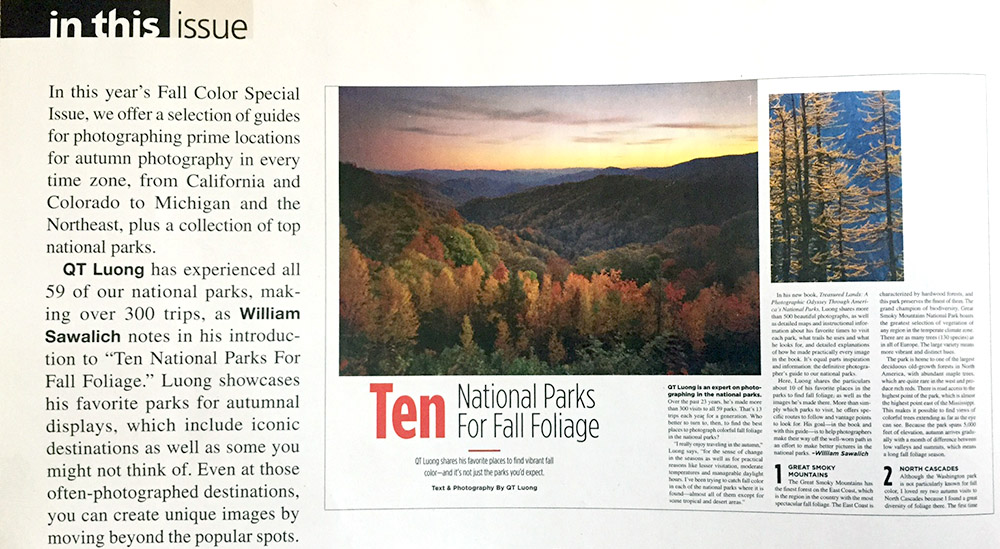
The images in the article depict fall foliage as leaves on trees, but there is more than that to it, and I’ll share a few in this post. At northern latitudes, the ground cover takes on magnificent colors in autumn. Let start where the OP article ended, in Denali National Park, with an image quite appropriate for Thanksgiving, which should by now be familiar 🙂 although it was chosen for NOT being an iconic view.
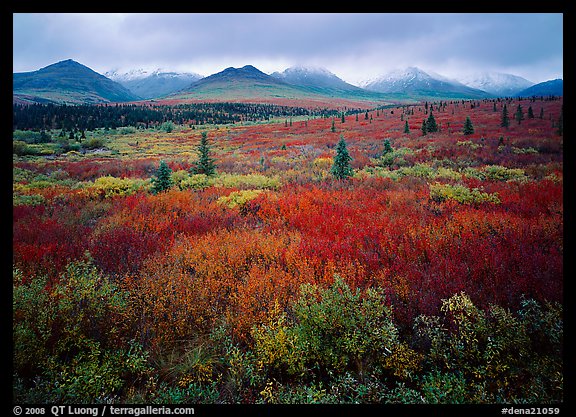
Healy Ridge from Park Road, Denali National Park
The tundra colors near Savage River peak in early September. There are distant views of Denali, but on a rainy day, I chose instead a composition in the other direction, with a closer and lower mountain range in the background. Clouds enveloped the higher Alaska Range all day, but for a moment, they lifted off the Healy Ridge slightly. The soft light revealed the color palette of the tundra, whereas, on a sunny day, the contrast would have made everything one shade of red. A graduated neutral density held detail in the cloudy sky.
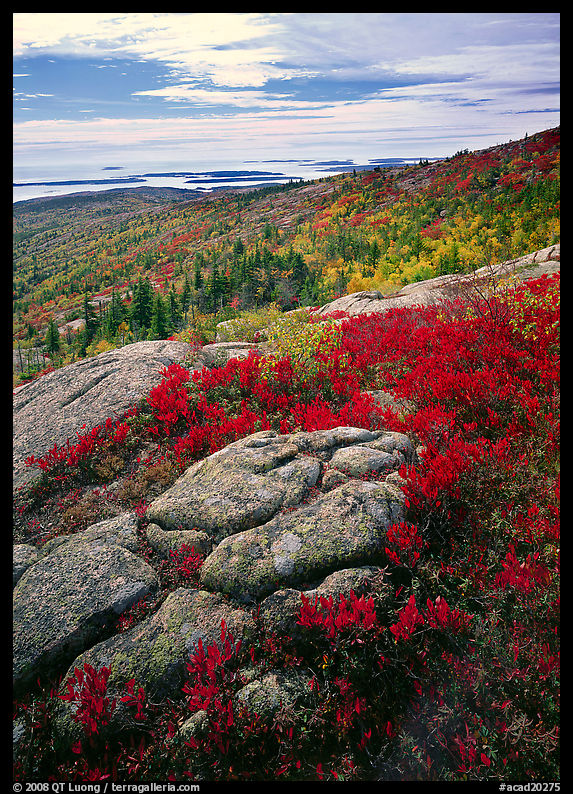
Cadillac Mountain, Acadia National Park
One doesn’t need to travel to Alaska to see similar ground color. It is found in patches on the mountains in the northern latitudes of the continental US, such as in Maine, Washington, and Montana. At lower latitudes, the fallen leaves provide ground color and can be just as evocative as those on the trees as illustrated by two images which initially caught Sawalich’s eye.
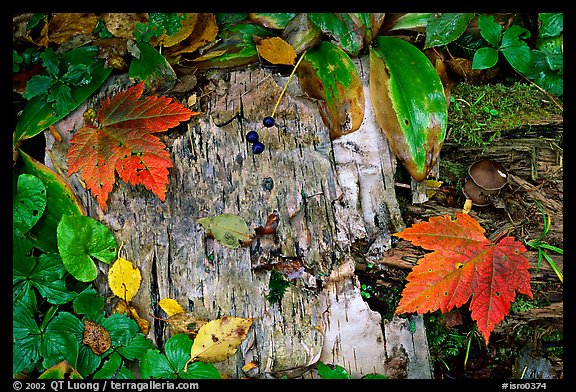
Maple leaves and weathered wood. Isle Royale National Park
For my first visit to Isle Royale National Park, I chose Windigo because it the park’s entry point closest to the mainland. A storm developed on Lake Superior, and because the ferry would not attempt the dangerous crossing back to the mainland, I was stranded on the wild island, together with the other visitors. The captain of the ferry cooked a large pasta pot for everybody. Afraid of missing a sudden departure, I limited my explorations to the nearby forest around Windego. The west side of the island supports maples that produce richer fall color than the trees on the east side, which is mainly covered with fir and birch. However, the views around Windego consist mostly of woodlands, rather than open views of shores or ridges. I looked for intimate forest scenes along the Windigo Nature Walk. Eliott Porter wrote “Sometimes you can tell a large story with a tiny subject.” I sought to photograph a microcosm of the island, by creating a composition with as many woodlands elements as I could include: undergrowth, fallen leaves, weathered wood, berries, mushrooms, moss. Even for those small forest scenes in overcast light, the polarizing filter made colors more vibrant by mitigating the glare from the leaves.
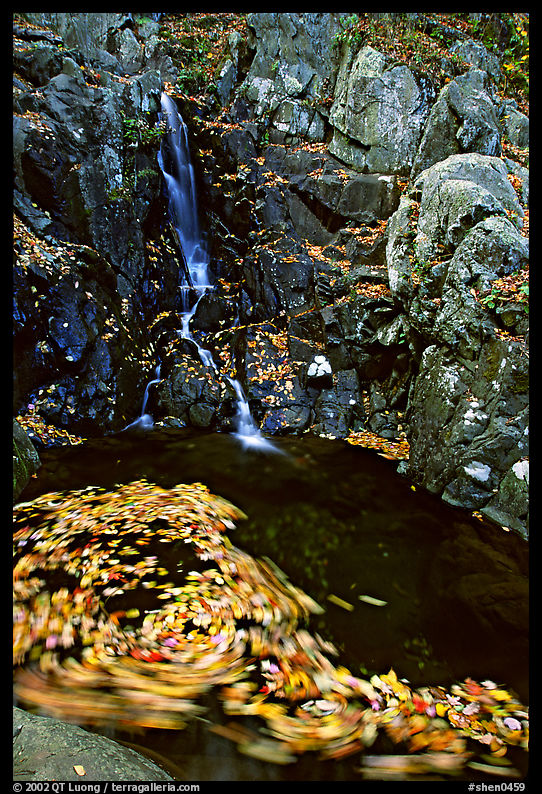
Spining leaves and cascade. Shenandoah National Park
Shenandoah National Park is known mostly for the views along the Skyline Drive, but below the crest, one will also find many streams and waterfalls. I combined visits of Dark Hollow Falls and Rose River Falls on a loop (5 miles; 1,000-foot elevation gain) along the exceptionally beautiful Hogcamp Branch of the Rose River. The fast-flowing river creates hundreds of small cascades that offer more possibilities than the two waterfalls. I initially set out to photograph just the cascade, but then noticed a swirling motion in the pool. Since I was photographing on film, I was uncertain about the exposure length that would add the best sense of motion, so I tried a variety of shutter speeds by changing the aperture. Being in the national park doesn’t necessary mean photographing the grand scenic landscape. The small details can be as beautiful and evocative, and lead to more personal photographs. One would think that those small details can be photographed anywhere, without need to travel to a national park. While this is true, I have found that being in such an inspiring place as a national park puts me in a frame of mind where I look more carefully.
Since I have photographed fall color in 36 of the 59 national parks, you’ll find even more fall foliage images in Treasured Lands, where the seasons are discussed in detail for each national park.


Your photographs are always breathtaking. I feel your passion for you work in every image. Always enjoy your photos. Keep up the great work.